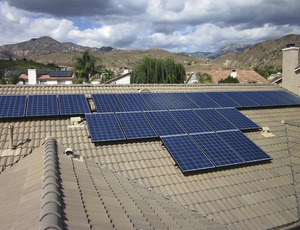

As 2014 began, Keystone XL supporters were pushing for President Obama to approve the pipeline’s southern segment. A Dec. 30, 2013, BNSF train carrying crude from the Bakken field derailed near Casselton, N.D., triggering a fiery explosion. Earlier in the year, 47 people died in Lac Megantic, Quebec, after a train hauling crude crashed into a tavern.
The pipeline industry quickly seized the initiative, claiming that pipelines move hydriocarbons more safely than trains. But in April, the State Dept. delayed final approval, pending a Nebraska court case to decide whether the governor has the final say regarding routing. Contractors and union interests were heartened by midterm election results, which gave Republicans control of the House and Senate. Keystone is high on the agenda for the new Congress in January. With support from coal-state Democrats, approval is almost certain, but President Obama has not indicated whether or not he’ll veto the measure.
Regardless of the final decision on Keystone, the president advanced his all-of-the-above energy program in 2014.
Maintaining its technological leadership position in hydraulic fracturing, the U.S. continued a breakneck pace in oil and natural gas recovery. The overabundance of natural gas kept prices low, prompting utilities such as Southern Co. to retire some coal-fired units and refit others as integrated gasification combined cycle (IGCC) units. Merchant producer Panda Power went all in, putting seven gas-fired units under construction, adding more than 5,500 MW to the grid in the next four years.
The natural gas glut spurred a resurgence of cheap feedstock for large petrochemical and other industrial plants in the U.S. With the domestic production surging and OPEC declining to cut its output, the price of oil dropped by about 40% from July to Decmber. Less than a decade ago, the U.S. was building LNG import terminals on the Gulf Coast; now the flow is reversing, with several multibillion-dollar LNG export facilities under construction already, and more in the pipeline.
Despite the pre-election moaning from coal-state pols about the White House waging war on the black stuff, it maintains the largest slice of the electricity-production pie. That slice is shrinking but overall tonnage numbers are holding steady as exportsare climbing. In a belated but significant acceptance of global climate change, coal's best hope would seem to be successful demonstration of carbon capture and storage technolgy. The Kemper, Miss., pilot project has been best by schedule delays and cost overruns.
Similarly, coasts keep climbing at major nuclear power projects under construction in Georgia and South Carolina. The Vermont Yankee facility shut down at the end of the year, unable to afford safety upgrades in the face of cheap natural gas replacement power.
The long-term outlook for a technology-based U.S. energy portfolio gained momentum in 2014. Electricty from utility-scale solar production plants gained more than 100% above the total for 2013. The advance was thanks in part to several large-scale facilities coming online and the extension of production tax credits.
Wind power, also aided by tax-credit extensions, increased its market share, as a number of large wind farms came online. There is more to come, propnents say, and much of the growth in 2015 will likely come from offshore wind farms.
The coal-and-gas old guard has routinely knocked renewables, claiming that the sun doesn't always shine and the wind doesn't always blow. Maybe so, but work on that problem is well underway in a number of places. Energy storage, mainly through batteries, would effectively incorporate wind and solar power into the energy mix and feed a national grid that is becoming more robust all the time.


Post a comment to this article
Report Abusive Comment